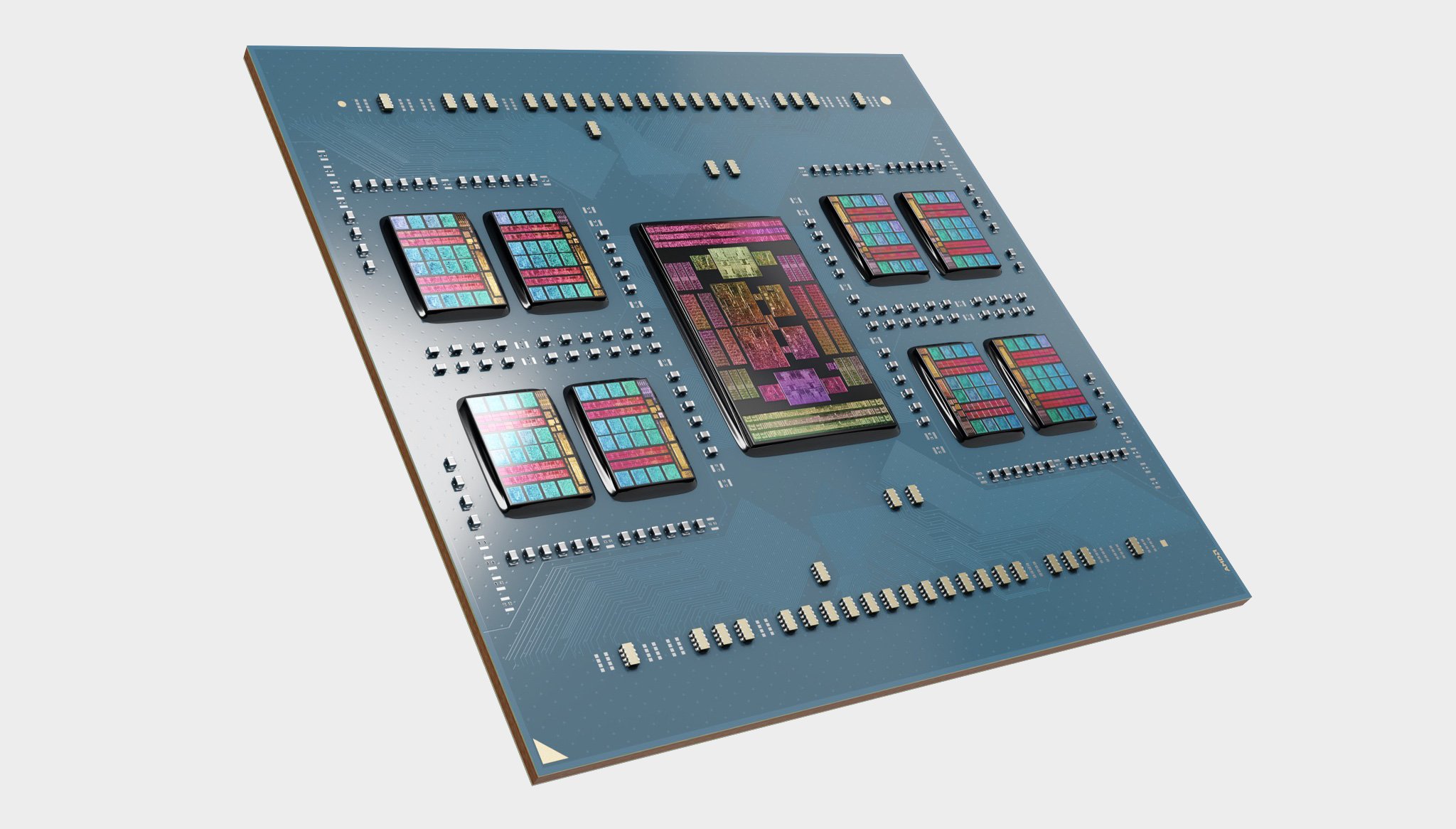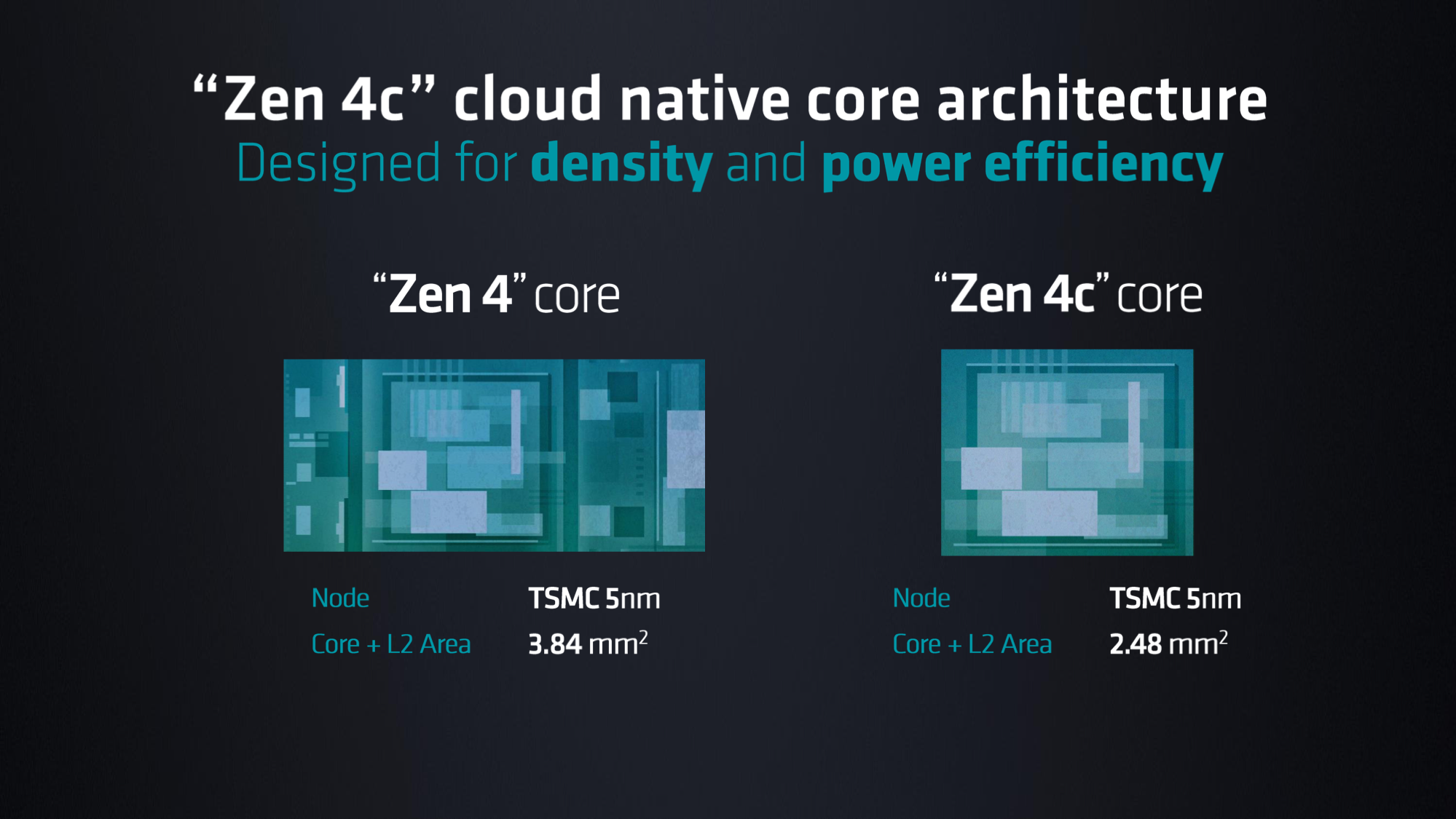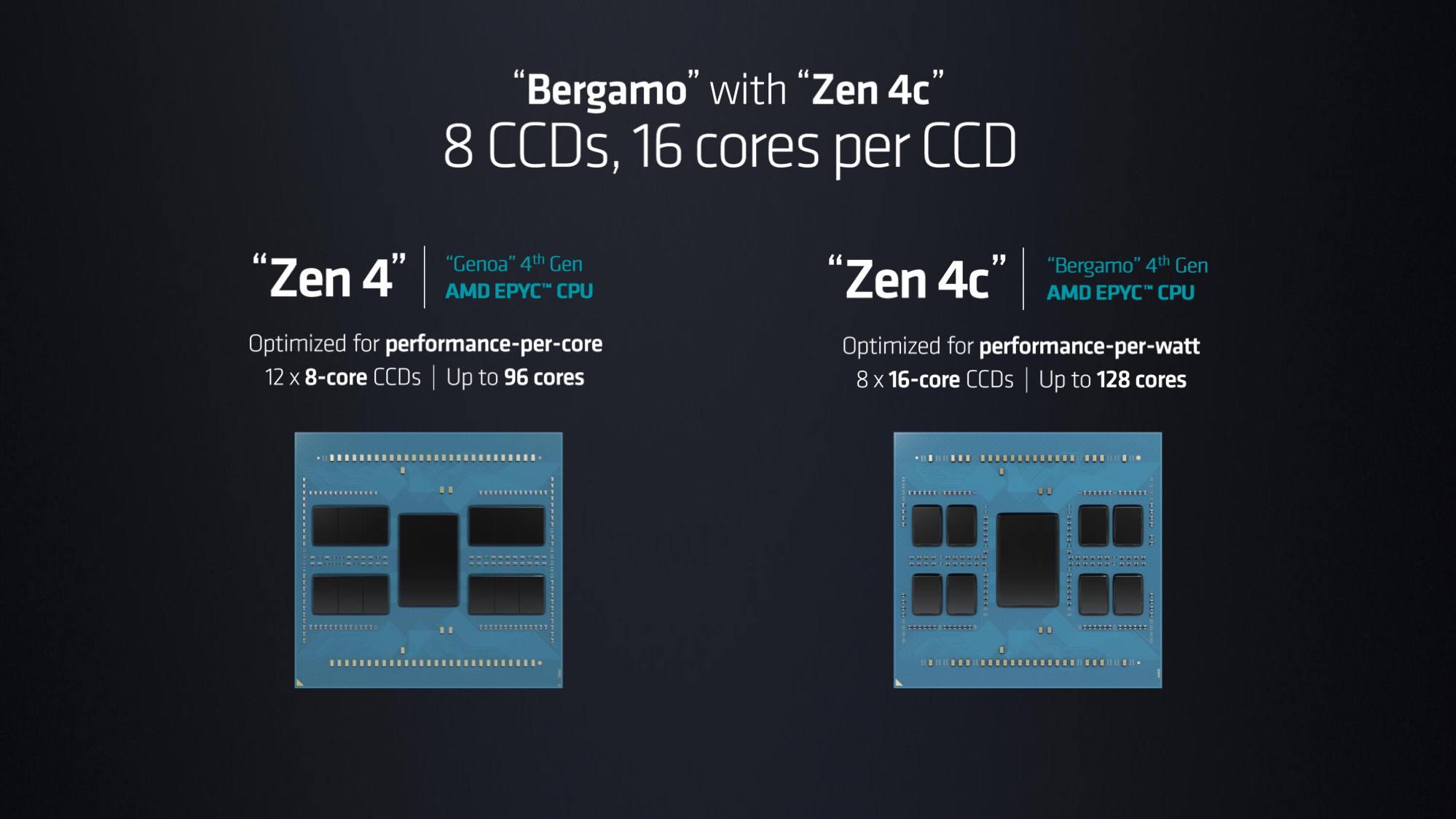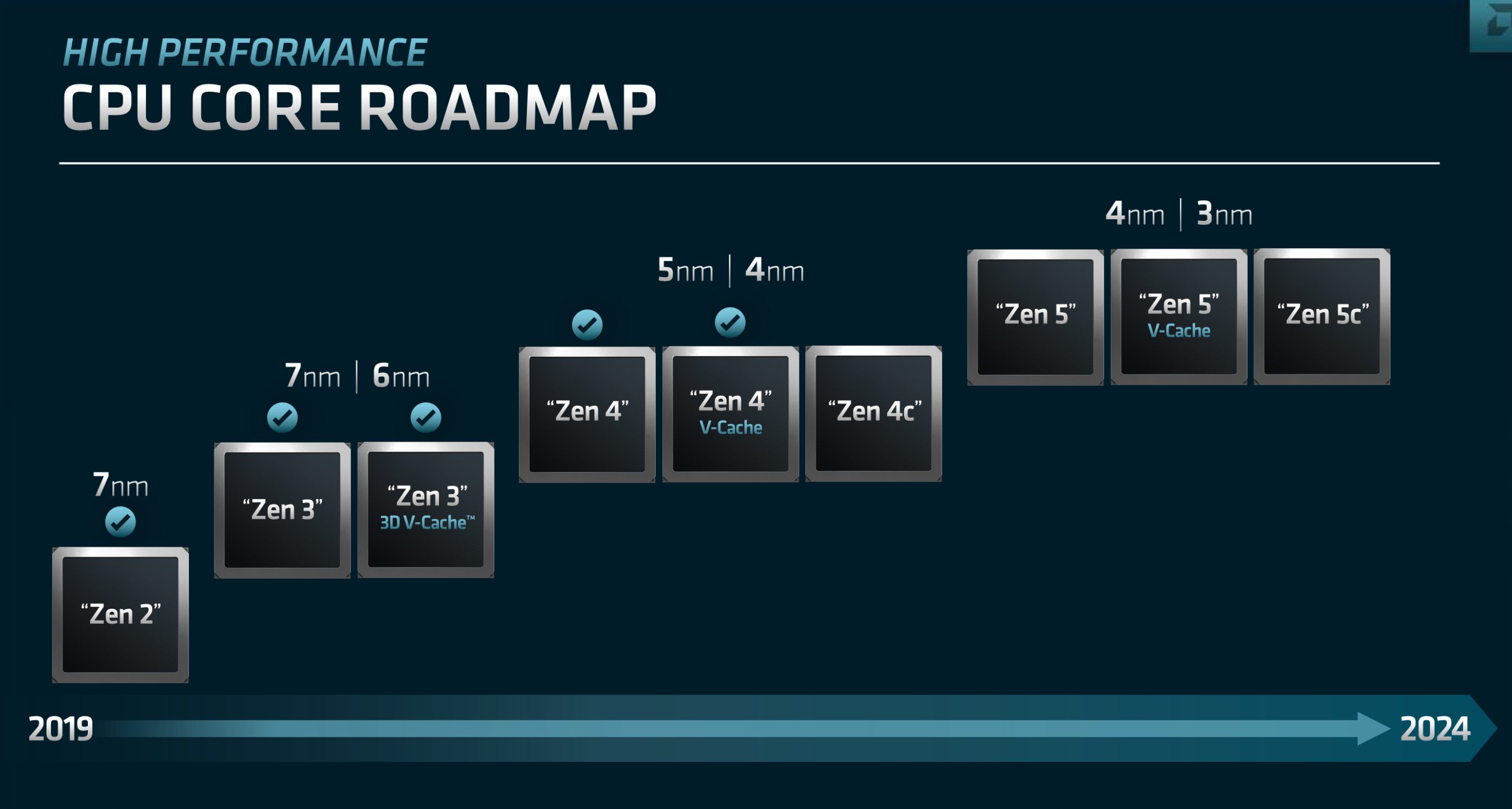
Intel has been selling hybrid CPUs with a mix of Performance and Efficient cores since the launch of 12th Gen Alder Lake CPUs back in November 2021. As it happens, AMD already has its own take on Intel's Efficient cores, as we've reported previously. But AMD is doing thing differently, very differently indeed.
We've explained previously how AMD's smaller Zen 4c cores are functionally identical to full fat Zen 4 with the exception of offering half the L3 cache. And yet they somehow only take up half the space of a Zen 4 core.
So, that's the same execution and issue width, the same number of registers, the same internal latencies, the works. And yes, that does include multi-threading. But somehow you can pack two Zen 4c cores into the same space as one Zen 4 core? Does cutting the L3 cache from 4MB per core to 2MB really make that much difference?
Apparently, no. To be clear, two Zen 4c cores do fit in the space of one Zen 4 core. AMD says that a Zen 4 core covers 3.84mm2 while a Zen 4c core is just 2.48mm2. But there's more to the transition than just cutting out some cache.
YouTube channel TechTechPotato attended a recent AMD Data Center and AI event and managed to uncover some answers. It all comes down to physical design targets. For full fat Zen 4, that includes supporting operating frequencies all the way up to 5.5Ghz and beyond. But for Zen 4c, the clock speed target was reduced to the low 3GHz region.
Turns out that makes a huge difference to how you lay a CPU core out. With lower clocks, you can make the internal structures much smaller with worrying about the interference and power leakages that come with high operating frequencies.

And yet, the core remains functionally identical and offers the same IPC or performance per clock cycle as full Zen 4, save for cases where the L3 cache differential has a substantial impact. Of course, it just so happens that games are one such an application that tends to benefit from more cache memory, hence AMD's own X3D CPUs with oodles of added cache such as the Ryzen 7 7800X3D.
Anyway, it's a very different approach to Intel's. 12th Gen Alder Lake and 13th Gen Raptor Lake Intel CPUs have two totally different core designs. Intel's Efficient cores are even smaller than AMD's, taking up more like one quarter the space of an Intel Performance core. So, you can cram roughly four Efficient Cores into the space of one Performance core.
But there's much more asymmetry between Intel's core types, differences in issue width and latencies and even instruction set. And, of course, Intel's Efficient cores do not support multi-threading. So, it's that bit more complicated to manage thread allocation and load balancing on Intel's hybrid design.

Of course, given that Zen 4c cores run at significantly lower clocks, you'll still want to be careful how you schedule threads. For a desktop gaming PC with a mix of Zen 4 and Zen 4c cores, for instance, you'd still very much want to ensure that the main game threads were all running on the full Zen 4 cores.
Anyway, with all this in mind, the next question is when we might see an AMD hybrid CPU in a desktop or laptop and what sorts of specifications you might expect. AMD has announced its first CPU with Zen 4c cores, a server chip known as Bergamo.
That's a Zen 4c-only design with up to eight chiplets, each with 16 Zen 4c cores for a maximum total of 128 cores and 256 threads. But theoretically, it would be easy enough for AMD to package, say, one of its existing eight-core Zen 4 chiplets or CCDs with a 16-core Zen 4c chiplet, and thus offer a 24-core and 48-thread CPU for the desktop that would be pretty darn compelling.

There's no immediate evidence that AMD is planning to launch such a hybrid Zen 4 chip. AMD has only made a broad commitment to mixing "high performance cores with power-efficient cores" in future. However, it's easy to see how AMD can apply this approach to any future CPU architecture.

Best CPU for gaming: The top chips from Intel and AMD
Best gaming motherboard: The right boards
Best graphics card: Your perfect pixel-pusher awaits
Best SSD for gaming: Get into the game ahead of the rest
If it wants to release a hybrid Zen 5 chip, for instance, it doesn't need to design a whole new core to go along with Zen 5, just apply the same space optimization to Zen 5 as it did to Zen 4 and create Zen 5c. And indeed AMD's public roadmaps show just such a "Zen 5c" architecture is planned for next year.
Overall, it seems like a typically clever and efficient way to go about things. Where Intel designs a whole new core and spins up a zillion different CPU dies, AMD tweaks its existing core, adds a single new chiplet design and ends up with the ability to mix and match performance and efficiency cores as needed.
Indeed, there are rumours that AMD has done just that for its next gen Zen 5-based APU for laptops, albeit AMD's laptops are monolithic dies rather than chiplet designs. But it certainly makes sense to prioritise a smaller, more efficient core for laptops.
Whether we'll see hybrid desktop CPUs from AMD in the Zen 5 generation, which will probably go on sale at the end of 2024, or if that may not happen until Zen 6 and beyond isn't clear. But hybrid AMD CPUs are coming and now we have a decent idea of what those hybrid chips will look like and how they'll be different from Intel's.







